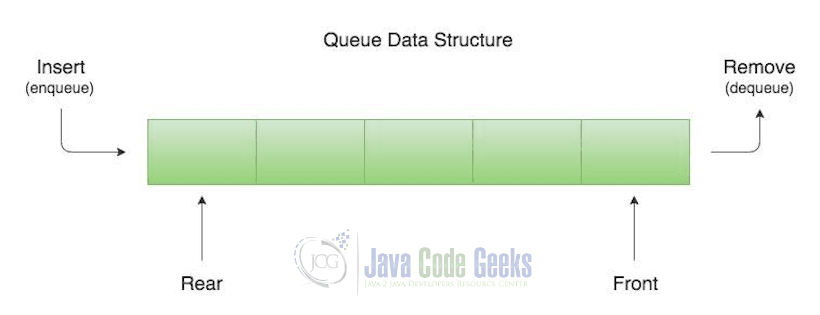
public interface TransferQueue extends BlockingQueue Added in Java version 1.7 and is part of package. TransferQueue is a concurrent blocking queue implementation in which producers may wait for the receipt of messages by consumers. ("queue contains " + queue) // queue contains 3.2. ("queue contains " + queue) // queue contains Add elements to ArrayBlockingQueue using put method create object of ArrayBlockingQueueīlockingQueue queue = new ArrayBlockingQueue(5)
Java queue remove how to#
Let’s now look at an example of how to use BlockingQueue.

LinkedBlockingQueue implementation of BlockingQueue is an example of an Unbounded queue.īlockingQueue blockingQueue = new LinkedBlockingDeque()
Java queue remove full#
When a Thread tries to insert elements in the already full queue, then the Thread blocks until some other Thread creates some space in the queue by removing elements from the queue.Thus, BlockingQueue is excellent when we want to skip the complexity involved in wait–notify statements and can be used to solve the popular producer-consumer problem. public interface BlockingQueue extends QueueīlockingQueue interface introduces blocking in case it is full or empty. Added in Java version 1.5 and is part of package. It is a concurrent queue that manages the queue operations concurrently. BlockingQueueĪ BlockingQueue is like another Queue implementation with additional capabilities. Let’s now look at some of these sub-interfaces and the implementation classes of Queue Interface in detail along with practical use-case and examples.

Also, there are some interfaces that extend the Queue Interface like Deque, BlockingQueue, TransferQueue, etc. Some implementation classes that implement Queue Interface directly are LinkedList, PriorityQueue, and ArrayDeque. We can use Queues to represent real-life situations like handling website traffic, routers and switches in networking & handling hardware processes or real-time system interrupts.The operation of removing an element from the front end of the queue is called Dequeue.The operation of adding an element to the rear end of the queue is called Enqueue.We can access both ends of the queue i.e.Some of the important characteristics of Queue are as follows:

So for this requirement, we can use Queue data structure to maintain all the email-ids which helps us in adding new emails at the end (rear) and pick new emails from the start (front) to send the emails in the same order in which they are added to the queue. The requirement is to send the emails in the order in which they are added to the service. Let’s take an example to understand this more clearly,Īn email service has to send emails to the configured email-ids of the candidates. If we want to represent a group of individual objects queued for processing, then Queue is the best choice. Rear or Tail: the index from where new elements are added in the queue.Front or Head: the index from where the elements are removed/processed from the queue.


 0 kommentar(er)
0 kommentar(er)
